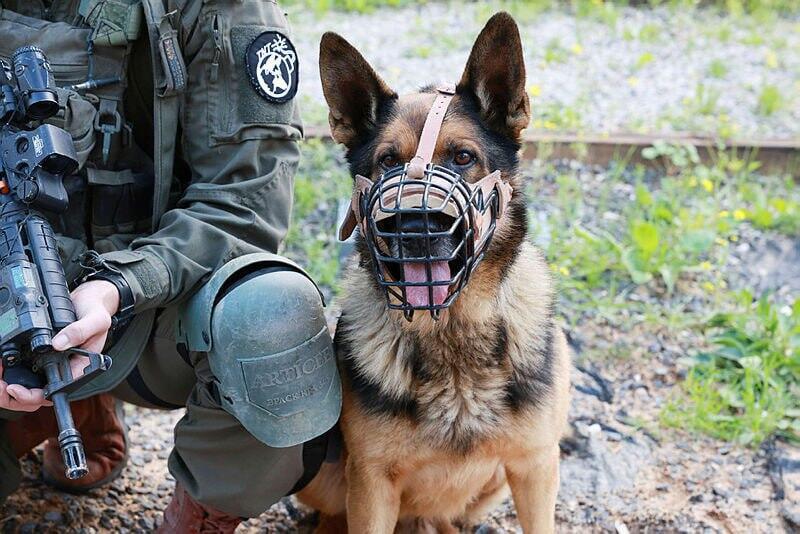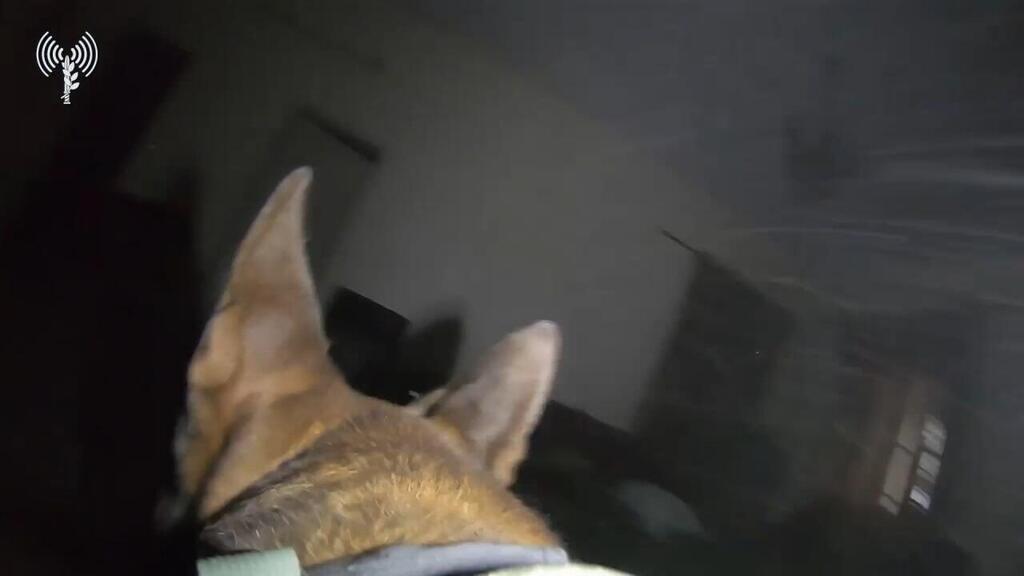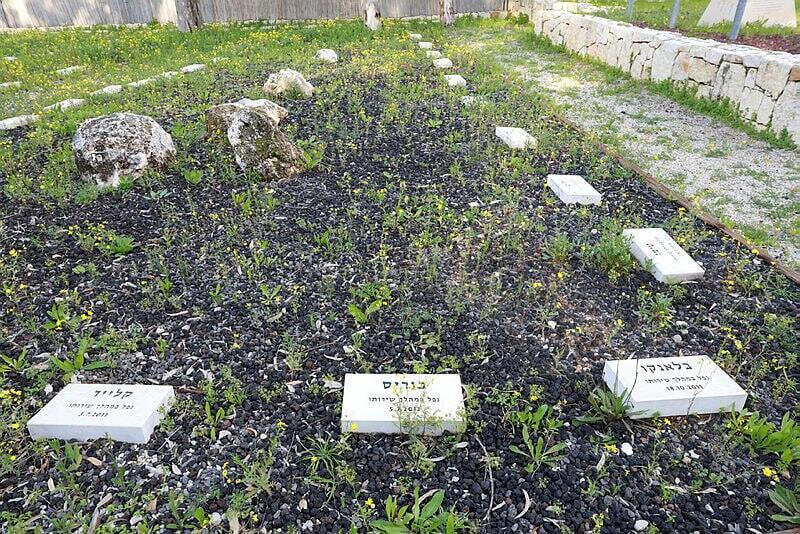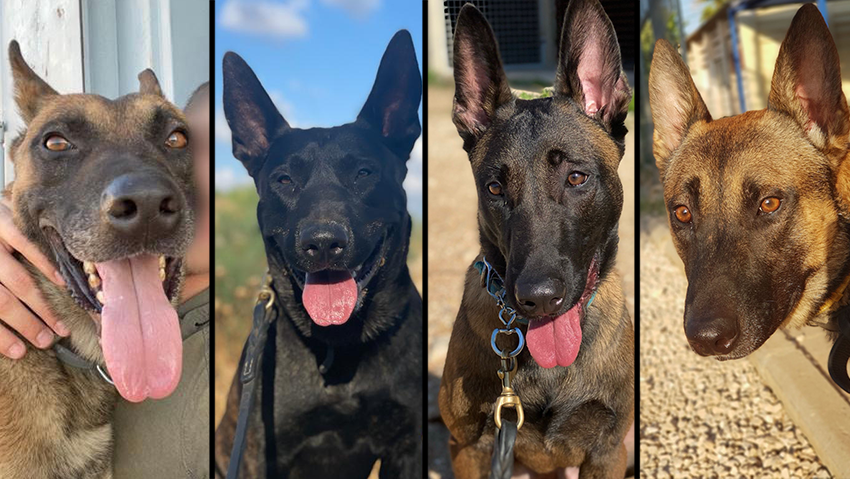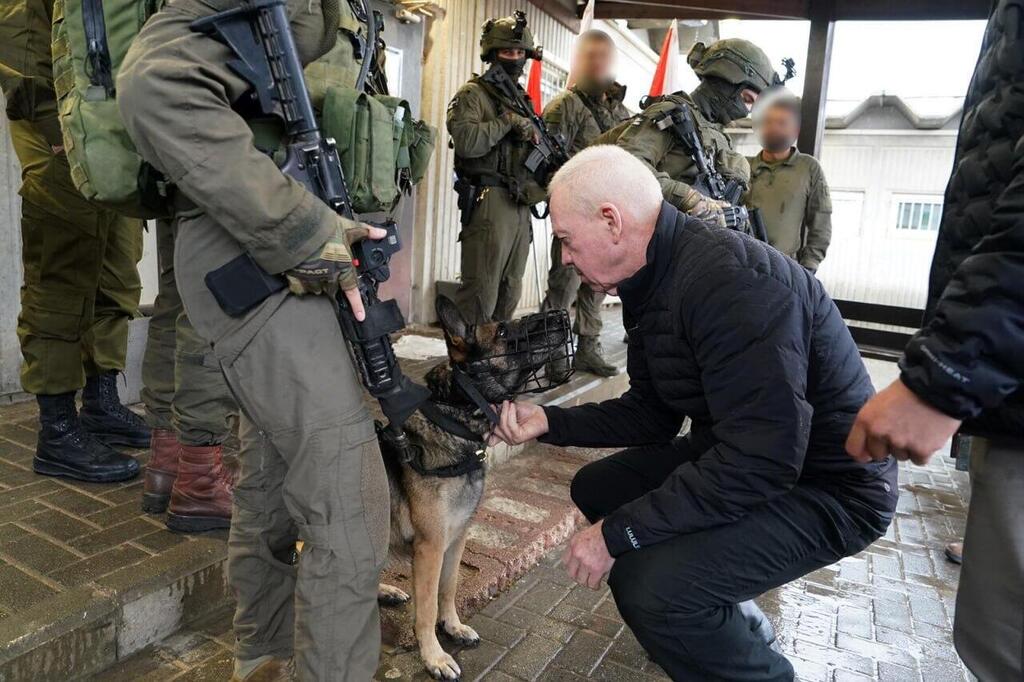Soldiers from the IDF's Oketz canine unit sent a combat dog into a building where terrorists were hiding in the Jabaliya refugee camp in Gaza about two weeks ago. When the dog did not return, the soldiers retrieved its body, and only then realized the dead dog was rigged with explosives; this realization prevented human casualties.
Since October 7, the unit has lost about 30 dogs, but it is expected to grow due to its operational success.
The unit scanned the suspicious building with a drone to search for the large IDF dog which seemed to have vanished. The dog was shortly spotted lying on the sidewalk next to the building, and it was unclear if it was still alive. When the soldiers arrived at the spot, it had disappeared again. They found the dog lying on the floor next to the adjacent building but suspected that the terrorists had secretly killed it and hid explosives under its body, understanding that the IDF would eventually come back to retrieve it.
The reinforced scanning team did not fall into the trap and managed to identify residual explosives coming out of the dog's body, which had almost been turned into a bomb. The explosives were removed from the dog, which was taken for burial in the canine cemetery in the Oketz base.
This is not the first time Hamas terrorists have set traps for soldiers. Several units reported to have found AK-47s rigged on top of pinless grenades in the absence of the terrorists who set the trap. Moving or lifting the gun would trigger the grenade to explode, immediately wounding or killing IDF soldiers.
In addition to the approximately 30 dogs killed in action, more than a dozen canines were injured and retired from service. In recent months, the unit has acquired dozens of new dogs from abroad for various tasks. The unit's manpower (and dogpower) will nearly triple over the next five years.
"We are already looking at the situation in the north after the extensive experience gained with the dogs in Gaza," says a senior officer from the counter-terrorism unit. "The unit has become a world leader in many unique professional aspects of combat with dogs in Gaza, and with fighters who operate deep in enemy territory, for sensitive tasks of identifying casualties and even for special tasks of identifying explosive materials."
Drones and intervention units
As part of Oketz's build-up, the IDF purchased several sets of live broadcast equipment for the dogs, to broadcast the operation in real-time, which is unprecedented in the IDF. Oketz canines marked hundreds of explosives in combat in Gaza. "We also use drones and other means, so it has never happened that a dog incorrectly marked or failed to detect explosives in a way that caused harm to soldiers. We do not endanger soldiers by rescuing the dogs' bodies and, where it's too dangerous, we are forced to leave their bodies in Gaza," said sources from Oketz.
During several acquisitions for the unit's operations, Oketz is preparing to incorporate female combat instructors for the first time in the unit's history. These soldiers will serve for at least two years and eight months, like their male counterparts under the same rigorous physical standards. The reason for the relentless threshold is that this position is primarily a combat role.
The IDF is renovating its counter-terrorism efforts with a drone unit that will train soldiers to spot suspicious activity after a short course. Also, the counter-terrorism unit is training reservists to act as counter-terrorism first responders in the event of an invasion around Gaza and the West Bank. All the reservists selected for this mission have completed their service in the counter-terrorism unit. Also, the IDF's training for sharpshooters will expand, training reservists after already having trained about 20,000 reserve fighters since October 7.




